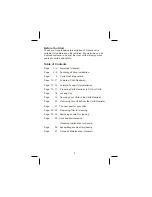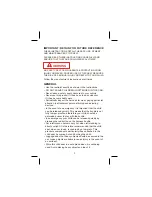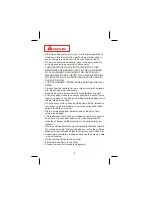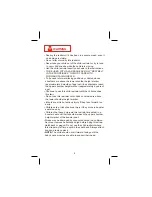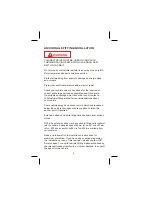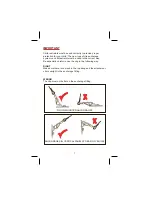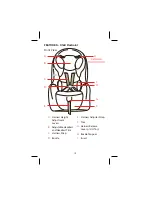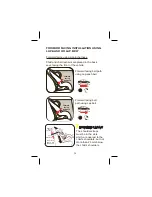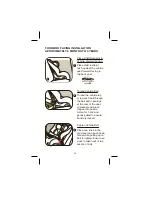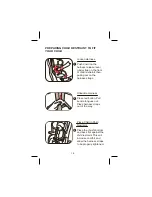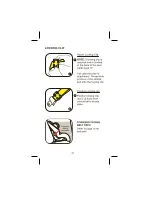
• When the child seat is not in use, it is recommended that it
is fastened into the car with a seat belt plus tether strap to
avoid it being thrown about in the event of an accident.
• Do not use seat belt extenders, even if the car seat belt is
not long enough to secure the child restraint.
• THIS RESTRAINT MUST BE ATTACHED TO A CHILD
RESTRAINT ANCHORAGE POINT IN THE CAR. REFER
TO CAR OWNER’S HAND BOOK FOR LOCATION OF
ANCHORAGE POINTS. REFER TO A CHILD RESTRAINT
FITTING STATION IF NO ANCHORAGE POINTS ARE IN
THE MOTOR CAR.
• TOP ANCHORAGE TETHER STRAP MUST BE USED ALL
TIMES.
• Do not allow the restraint to come into contact with polishes,
oils, bleach and other chemicals.
• Repairs must only be done by the manufacturer or agent.
• To ensure baby’s back is evenly supported, do not put more
than one nappy on the baby and make sure the nappy is not
thickly folded at the back.
• Do not allow a child to have anything like a bottle, lollipop or
ice-cream on a stick. A bump or swerve could cause these
objects to injure your child.
• Protect all webbing from abrasion and cutting by sharp
corners and edges.
• The restraints should not be purchased or sold as a second
hand item. It is recommended not to use child restraints
older than 10years as the protection in an accident may be
reduced
• Use the child restraint only on vehicle seats that face forward.
Do not use on seats that face the sides or rear of the vehicles.
• Make sure that harness height is correct for your child’s size.
• Supervision of children is needed because they may be able
to undo buckles.
• Fit the restraint firmly to the car seat.
• Fit the harness firmly to the child.
• A loose restraint or harness is dangerous.
4
WARNING
Summary of Contents for COMPLETE AIRCA 2010
Page 18: ......


